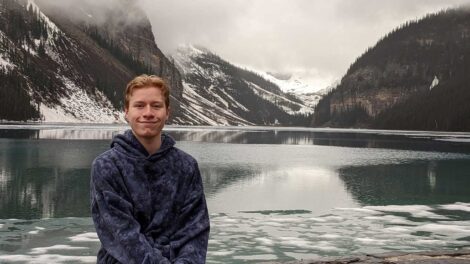Prof. Tamara Carley wins NSF grant to study Icelandic volcanoes
By Shannon Sigafoos
Tamara Carley, associate professor of geology, has received a $238,445 National Science Foundation grant to study subglacial silicic magma systems in Vatnajökull, Iceland, to better understand Iceland’s crustal construction processes and glacio-volcanic hazard potential.
Silicic magmas have the potential to erupt more explosively and with greater associated hazards than basaltic magmas. Carley—along with a collaborator at Illinois State University, who was awarded a similar budget—will reconstruct magmatic histories (with relevance for anticipating future behavior) using evidence from accessory minerals in rocks from the active Grímsvötn, Barðarbunga, and Kverkfjöll volcanic systems.
Over the course of three years, Carley and research students will travel to Iceland to characterize rocks in the field and collect samples they can bring back and examine further in labs at Lafayette, University of Wisconsin, Washington State University, and Stanford University. They’ll also work with Icelandic collaborators who can provide samples acquired from around the ice cap.
“We’re looking for evidence of silicic magma underneath the glaciers, because we’re trying to understand a really complex, exciting, and dangerous interplay between magma, volcanoes, glacial ice, climate change, and hazards,” Carley shares. “It’s a really exciting new direction to be taking. The climate change influence on volcanoes, and vice versa, is important to understand better than we do.”
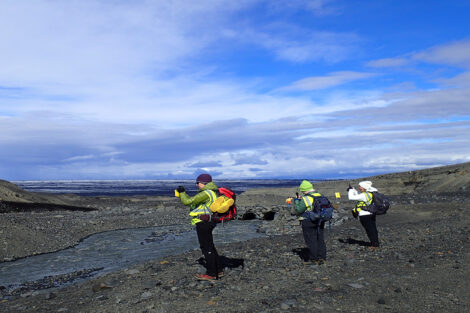
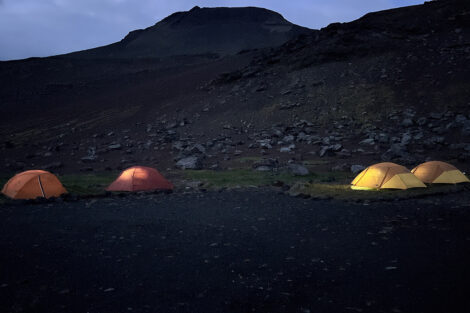
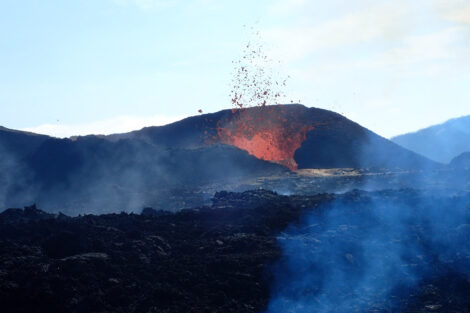
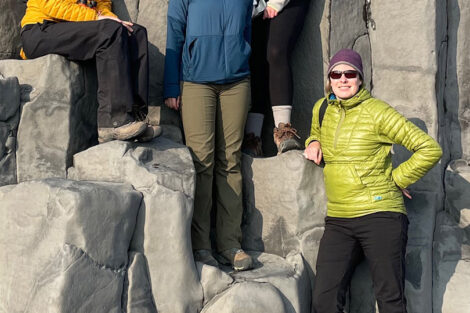
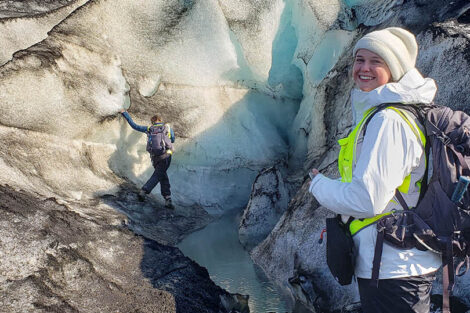
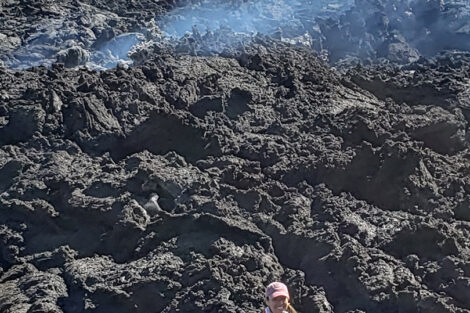
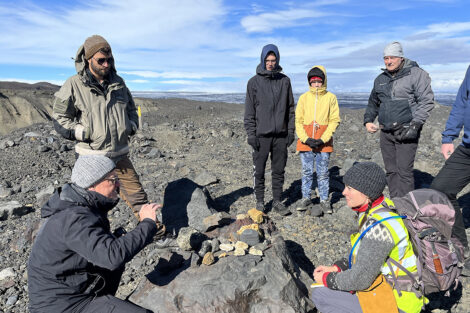
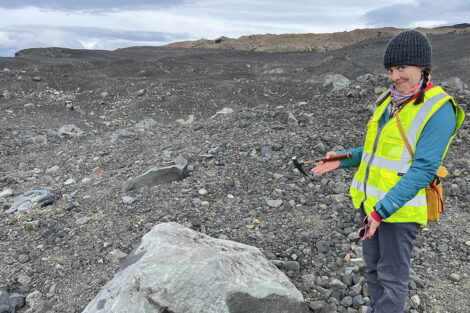
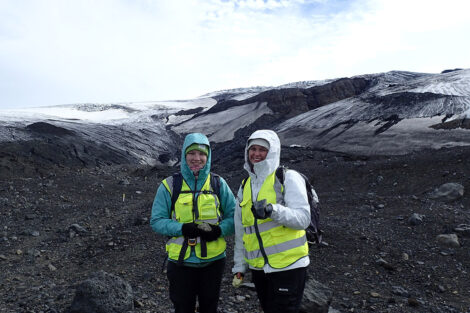
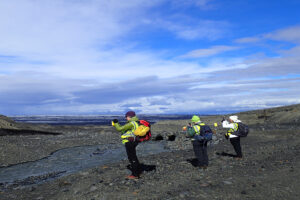
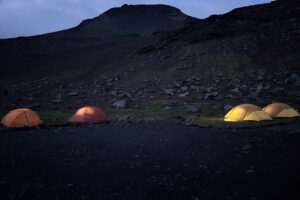
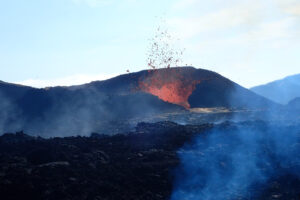
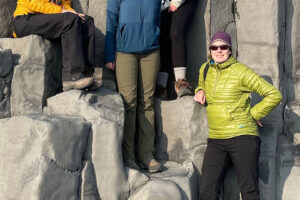
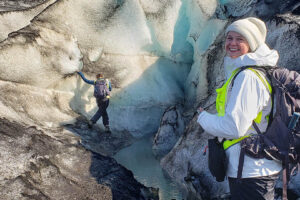
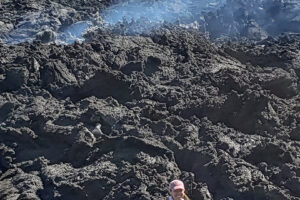
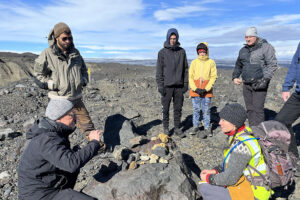
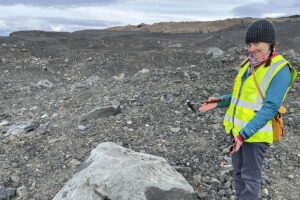
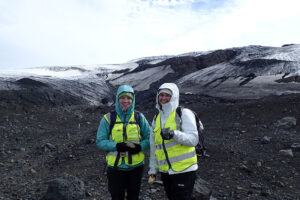
![]() Carley—along with rising sophomore Morgan Merritt ’25—recently spent nearly two weeks in Iceland, in Vatnajökull National Park, conducting the first round of fieldwork supported by this grant. Coincidentally, their excursion happened during the time the Fagradalsfjall volcano was erupting in early August.
Carley—along with rising sophomore Morgan Merritt ’25—recently spent nearly two weeks in Iceland, in Vatnajökull National Park, conducting the first round of fieldwork supported by this grant. Coincidentally, their excursion happened during the time the Fagradalsfjall volcano was erupting in early August.
“The end part of our trip was reserved for some geo-tourism stops, and one of them happened to be the erupting volcano,” Merritt says. “We hiked more than 3 miles to see it, and we were so close to the site! I enjoyed studying rocks from volcanoes that are millions of years old, then seeing days-old rock, all within the same week. I took a piece of the new lava flow and brought it back.”
Merritt, who experienced her first-ever trip to Iceland, went on to discuss the importance of the field study made possible by the grant.
“I’ve learned a great deal about Icelandic geology. I also learned about fieldwork and sample collection techniques. We spent such a short time in Iceland, and we have so much more work to do now that we have new rock samples. This field study will be an ongoing effort for the next couple years, and I’m excited to learn more as the project progresses. It will be a couple of months before we can definitively say what we’ve learned about our research area, but I’m also hoping to remain involved with the project throughout my time here.”
Data generated from the investigations will ultimately be relevant to a range of investigators (including petrologists, volcanologists, hazard planners, and climatologists), will be presented at national and international conferences and published in peer-review journals, and will strengthen and facilitate collaborations with scientists around the world. This data begins with information that comes from the rock samples collected overseas.
“There are so many different lines of evidence you can draw out of rocks. So much of a volcano’s history is just frozen in time, from the moment that magma erupts,” Carley points out before sharing the process the team will go through to find that evidence. “We’ll be looking at the isotopic composition of the rocks, and then we’re going to drill down even farther and look at mineral assemblages, then individual minerals inside the rocks. We’ll consider their composition, ages, and isotopic signatures, and layer all of these lines of evidence on top of one another to create a really comprehensive picture of why and how that magma formed and erupted.”

